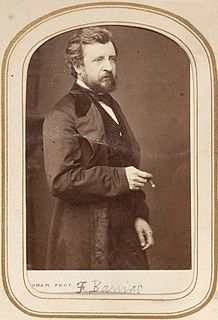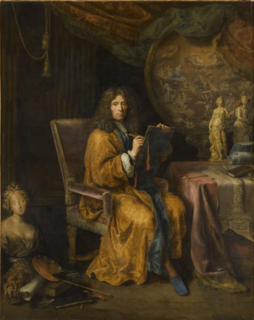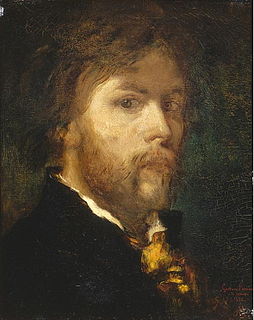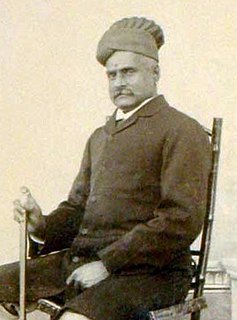 W
WSir Lawrence Alma-Tadema, was a Dutch painter of special British denizenship. Born in Dronryp, the Netherlands, and trained at the Royal Academy of Antwerp, Belgium, he settled in England in 1870 and spent the rest of his life there. A classical-subject painter, he became famous for his depictions of the luxury and decadence of the Roman Empire, with languorous figures set in fabulous marbled interiors or against a backdrop of dazzling blue Mediterranean Sea and sky. Alma-Tadema was considered one of the most popular Victorian painters. Though admired during his lifetime for his draftsmanship and depictions of Classical antiquity, his work fell into disrepute after his death, and only since the 1960s has it been re-evaluated for its importance within nineteenth-century British art.
 W
WFélix-Joseph Barrias was a French painter. He was well known in his day for his paintings of religious, historical or mythical subjects, but has now been largely forgotten. Artists who trained in his studio and went on to achieve fame include Edgar Degas, Gustave Achille Guillaumet and Henri Pille.
 W
WThe Master of Flora was a French painter, associated with the School of Fontainebleau, who was active in the middle of the 16th century.
 W
WPierre Gobert was a French painter.
 W
WChristian Ferdinand Hartmann was a German portrait and Classical history painter.
 W
WJohann Heiss, or Heiß was a German painter in the Baroque style, known for historical, Biblical and mythological scenes.
 W
WGermán Hernández Amores was a Spanish painter who specialized in Classical, mythological, and Biblical scenes. He was one of the few artists in Spain to adopt stylistic elements from the German Nazarene movement.
 W
WHenri-Léopold Lévy was a French painter of Jewish ancestry, known primarily for mythological and Biblical subjects.
 W
WÉmile-René Ménard was a French painter. From early childhood he was immersed in an artistic environment: Corot, Millet and the Barbizon painters frequented his family home, familiarizing him thus with both landscape and antique subjects.
 W
WPierre Mignard or Pierre Mignard I, called "Mignard le Romain" to distinguish him from his brother Nicolas Mignard, was a French painter known for his religious and mythological scenes and portraits. He was a near-contemporary of the Premier Peintre du Roi Charles Le Brun with whom he engaged in a bitter, life-long rivalry.
 W
WGustave Moreau was a major figure in the French Symbolist movement, whose main emphasis was the illustration of biblical and mythological figures. Moreau's paintings appealed to the imaginations of some Symbolist writers and artists. He is recognized for his works that are influenced by the Italian Renaissance and exoticism. Many of his works are on display at the Musée Gustave Moreau, a museum in Paris dedicated to his works.
 W
WPierre Olivier Joseph Coomans was a noted painter and illustrator born in Brussels, Belgium on June 28, 1816. He was the son of Josse-Joseph Coomans (1787-1868), inspector of registration and estates and author of novels and poetry, and Cécile Lesprit (1792-1871). He was known as one of Belgium's most celebrated 19th-century painters of historic subjects, genre scenes, and landscapes.
 W
WJoyce Reopel (1933–2019) was an American painter, draughtswoman and sculptor who worked in pencil, aquatint, silver- and goldpoint, and an array of old master media. A Boris Mirski Gallery veteran, from 1959–1966, she was known for her refined skills and virtuosity. She was also one of very few women in the early group of Boston artists that included fellow artist and husband Mel Zabarsky, Hyman Bloom, Barbara Swan, Jack Levine, Marianna Pineda, Harold Tovish and others who helped overcome Boston's conservative distaste for the avant-garde, occasionally female, and often Jewish artists later classified as Boston expressionists. Unique to New England, Boston Expressionism has had lasting national and local influence, and is now in its third generation.
 W
WJean Tassel was a French painter who specialized in mythological and genre scenes. He also did some portraits.
 W
WCharles-Auguste van den Berghe (1798–1853), was a French painter.
 W
WRaja Ravi Varma was a celebrated Indian painter and artist. He is considered among the greatest painters in the history of Indian art for a number of aesthetic and broader social reasons. Firstly, his works are held to be among the best examples of the fusion of European techniques with a purely Indian sensibility. While continuing the tradition and aesthetics of Indian art, his paintings employed the latest European academic art techniques of the day. Secondly, he was notable for making affordable lithographs of his paintings available to the public, which greatly enhanced his reach and influence as a painter and public figure. His lithographs increased the involvement of common people with fine arts and defined artistic tastes among common people for several decades. In particular, his depictions of Hindu deities and episodes from the epics and Puranas have received profound acceptance from the public and are found, often as objects of worship, across the length and breadth of India.
 W
WJohann Martin Veith was a Swiss painter in the Baroque style, known for historical, Biblical and mythological scenes.
 W
WJean-Antoine Watteau, commonly referred to as Antoine Watteau, was a French painter whose brief career spurred the revival of interest in colour and movement, as seen in the tradition of Correggio and Rubens. He revitalized the waning Baroque style, shifting it to the less severe, more naturalistic, less formally classical, Rococo. Watteau is credited with inventing the genre of fêtes galantes, scenes of bucolic and idyllic charm, suffused with a theatrical air. Some of his best known subjects were drawn from the world of Italian comedy and ballet.